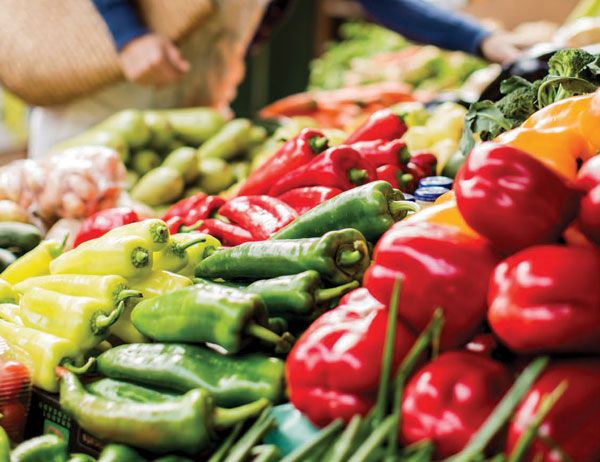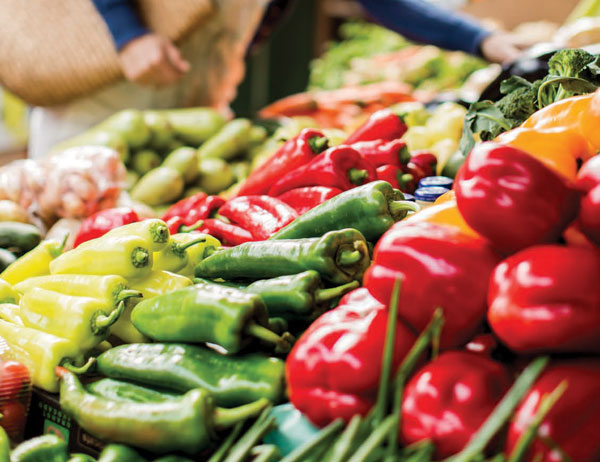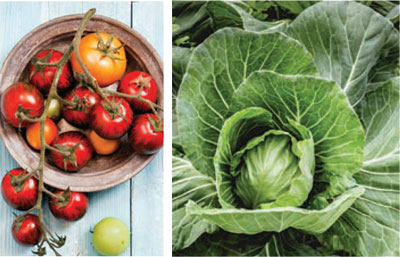Organic vs. Local vs. Natural vs. Conventional | What is Worthy of the Splurge?


There seems to be a multitude of labels that can be found at a health food store these days and decoding what they all mean can be overwhelming. What exactly does ‘natural’ mean? Why is organic so expensive? What exactly can you feel good about buying without busting your budget?
First of all, it’s important to know that the labels on at least some of the foods you’re buying are pretty lenient—although the United States Department of Agriculture (USDA) has guidelines—guidelines developed by working with food producers that have a stake in it. Many small family farms cannot afford to pay the fees it takes to earn the ‘organic’ label, so while those beautiful tomatoes you bought at the farmers market have actually been raised organically, they technically can’t call it that because they haven’t been certified by the USDA. And if they are caught labeling it without the proper certification, they can be fined several thousand dollars.
 The USDA defines “Natural” foods as foods that are minimally processed with no artificial ingredients or preservatives. This does not mean they don’t contain antibiotics, growth hormones or other chemicals, which is why the label can be misleading at times.
The USDA defines “Natural” foods as foods that are minimally processed with no artificial ingredients or preservatives. This does not mean they don’t contain antibiotics, growth hormones or other chemicals, which is why the label can be misleading at times.
“Organic” labeled foods consist of at least 95% organically produced ingredients without antibiotics, growth hormones, pesticides, petroleum or sewage-sludge-based fertilizers, bioengineer or ionizing radiation. Each organic ingredient must be identified along with the name of the certifying agency. To obtain the organic label requires submitting a three-year history of operations and substance use, the products to be grown, raised and produced, as well as a plan for practices and substance use. Producers also need to keep records for five years after certification, making all records and information available to the division of the USDA that oversees organic food production. Organic food producers tend to rotate crops, use compost and manure to fertilize, utilize birds and traps to protect crops from pests, allowing animals to roam while feeding them organic food.
“Local” foods are grown and produced regionally, but are not necessarily organic. “Conventional” foods are grown and processed using chemical fertilizers, pesticides, antibiotics and growth hormones to produce food that can cost less at the grocery store, but has higher environmental and health impacts.
So now that you know what some of that means, how should you use that knowledge when shopping for groceries? And how can you understand what you need to buy organic, versus what you can buy that’s conventionally grown?
Start with produce. There is a group called the Environmental Working Group (EWG), a nonprofit, nonpartisan group dedicated to protecting human health and the environment— sort of an environmental Consumer Reports. Every year EWG puts out a list of what they call the ‘Dirty Dozen’, the top 12 produce items with the most pesticide residue. This list is part of their Shopper’s Guide and is meant to be a resource for those who cannot always buy organic foods. The latest list from 2018 includes strawberries, spinach, nectarines, apples, grapes, peaches, cherries, pears, tomatoes, celery, potatoes and sweet bell peppers.

Dirty Dozen
most pesticide residue
Apples
Celery
Cherries
Grapes
Nectarines
Peaches
Pears
Potatoes
Spinach
Strawberries
Sweet bell peppers
Tomatoes
Clean 15
least pesticide residue
Asparagus
Avocados
Broccoli
Cabbage
Cantaloupe
Cauliflower
Eggplant
Honeydew melon
Kiwi
Mangos
Onions
Papayas
Pineapples
Sweet corn
Sweet frozen peas
When it comes to the dirty dozen, organic is considered best, but pesticides can be removed by cooking your produce and/or soaking them in a solution of baking soda and water if organic is unavailable. No matter how your fruits and vegetables are grown, thorough washing is always recommended.
EWG also puts out a ‘Clean 15’ list of foods with the least amount of pesticide residue that includes avocados, sweet corn, pineapples, cabbage, onions, sweet frozen peas, papayas, asparagus, mangos, eggplant, honeydew melon, kiwi, cantaloupe, cauliflower and broccoli.
Of course, local produce is also recommended. Some fruits like strawberries, peaches and nectarines don’t necessarily travel well, so you are likely to get a better product when buying locally grown fruits, since they are grown and harvested nearby within days or even hours of your purchasing them. This means they ripen on the tree or plant which allows their flavor to develop further than say, a strawberry grown in California, then shipped here to land in your grocery store shelves a few days later.
Thankfully, we live in an area plentiful with local berry patches and orchards that offer “pick-your-own,” always a fulfilling endeavor! Getting to know your local farmers means that when the next ban on romaine lettuce happens, you can skip worrying about where your salad greens come from. The downside to eating “local” is that you are somewhat limited to eating seasonably—no more strawberries or tomatoes in January, when sweet potatoes and butternut squash are plentiful.
Meats are also recommended for purchase organically. The cost is generally much higher than conventionally raised meats, so families have been known to reduce the amount of meat they eat in order to keep their budget in line. Such a switch to your diet may not go over well with everyone in your household, but consuming fewer animal fats in your diet is considered healthier.
When it comes to other pantry staples, like peanut butter, switching to organic is more than just an adjustment to your wallet, it’s also quite the change for your family’s taste buds. In addition to being made from organically grown peanuts, it can have less salt and sugar than conventional peanut butter and may take some time to get used to. Organic is considered better than conventional over all, as peanuts can absorb all sorts of things while they grow underground.
Other items like grains don’t necessarily have to be organic but can help you feel better about what you are feeding your family. Going full-on organic is pricey, so take small steps toward getting there. When in doubt, take some time to look up growing practices for your family’s particular favorites and ask questions of local farmers. Take the extra time to read labels, particularly if something is labeled “natural”—sometimes those “natural” or “organic” labeled granola bars will have more sugar than the ones that are conventionally produced.
Eventually, you’ll learn which products to reach for, once your initial time investment in what is best for your family is complete. Ideally, eating less processed foods and more real foods are best, although it can take some time for everyone’s taste buds and eating habits to adjust. The effort, in the long run, can be worth it, for as a wise old man once said, “you are what you eat.” ✦
apples, celery, cherries, Consumer Reports, Dirty Dozen, Environmental Working Group, grapes, labels on food, live, Local, natural, nectarines, Organic, peaches, pears, pesticide residue, potatoes, spinach, Strawberries, sweet bell peppers, tomatoes






